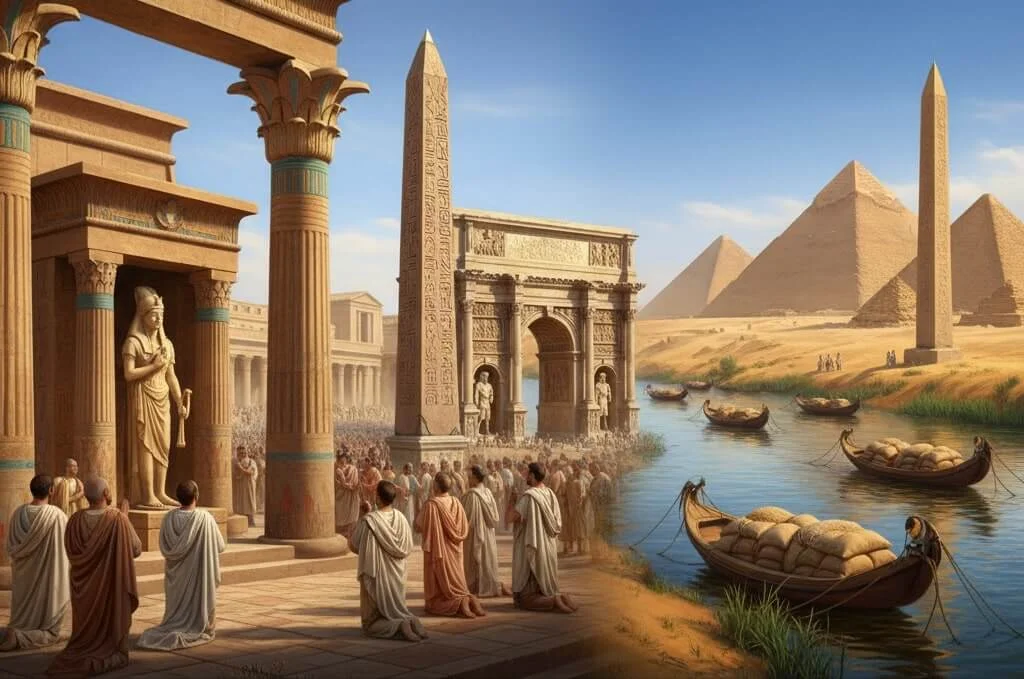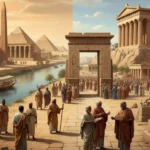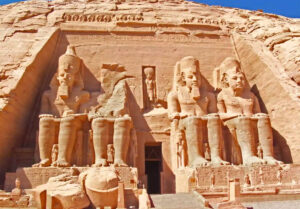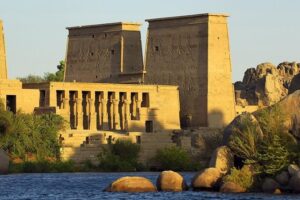Egyptian Impact on the Roman Empire
Discover the extensive Egyptian impact on the Roman Empire, from its vital role as the Roman breadbasket to the widespread adoption of Egyptian cults like Isis and the use of Egyptian architecture. The Roman Empire, a civilization that shaped the Western world, didn’t exist in a vacuum. Its expansion brought it into contact with diverse cultures, but few had as profound and lasting an influence as ancient Egypt. When Rome conquered Egypt in 30 BCE, it wasn’t just a military victory; it was a cultural fusion that would forever alter the course of Roman history.
Egyptian Impact on Roman Empire: Egypt’s Grain Supply
Egypt was a literal lifeline for the Roman Empire. Its fertile Nile River Delta was the breadbasket of the ancient world, supplying a massive portion of Rome’s grain. This regular supply prevented famines and ensured social stability, especially for the city’s vast population. Roman emperors understood the strategic importance of this region. They maintained tight control, using the Praefectus Aegypti, a special governor, to manage the province and its crucial food exports. This economic dependency wasn’t just about food; it was about power. Controlling Egypt’s grain meant controlling Rome itself.
The Spiritual Allure: Egyptian Cults in Rome
Roman religion was pragmatic and often focused on civic duty. However, the mystical and unfamiliar nature of Egyptian gods held a powerful appeal. The cult of Isis became immensely popular throughout the Roman Empire. Initially, it was embraced by sailors who sought the goddess’s protection at sea, but its influence soon spread to all levels of society. Temples dedicated to Isis, called Iseums, sprang up in Rome and across the empire. The cult offered a personal, emotional connection to the divine, promising salvation and an afterlife—a stark contrast to Rome’s more formal state religion.
Similarly, the worship of Serapis, a Greco-Egyptian deity created during the Hellenistic period, also gained traction. This god combined the attributes of the Egyptian god Osiris and the sacred bull Apis with Greek deities like Zeus and Hades, making him more accessible to a Hellenized Roman population. These cults showed how Egyptian spirituality filled a void in Roman religious life.
The Architectural Legacy: Obelisks and Egyptian Motifs
Rome loved to display its conquests, and what better way to do so than by bringing back monumental trophies? After conquering Egypt, Roman emperors had a new prize: the ancient Egyptian obelisks. These towering stone pillars, originally carved in Egypt, were transported and re-erected in Roman public spaces. They became powerful symbols of Rome’s dominion over a glorious and ancient civilization. The Flaminian Obelisk in Rome’s Piazza del Popolo and the Lateran Obelisk, the largest standing ancient obelisk in the world, are prime examples.
Roman architects also incorporated Egyptian motifs into their own designs. The Pyramid of Cestius, a tomb built in Rome during the 1st century BCE, is a fascinating example of this influence. It was a Roman’s attempt to emulate the grand burial structures of the pharaohs. These elements weren’t just decorative; they were a way for Rome to appropriate Egypt’s ancient prestige and sophistication.
Egyptian Impact on Roman Empire: Egypt as a Roman Province
Rome learned valuable administrative lessons from its time in Egypt. The bureaucratic structure used by the Ptolemaic dynasty, which had ruled Egypt before the Romans, was highly efficient. The Romans largely adopted this system, complete with its complex tax collection methods and census-taking. This infrastructure helped Rome effectively manage a province that was both geographically distant and economically vital.
Egyptian legal and administrative practices, such as the use of papyrus records, were also absorbed into the Roman system. This allowed for detailed record-keeping, essential for managing the grain supply and the province’s vast wealth. The Roman presence in Egypt became a masterclass in provincial administration.
The Scientific and Medical Knowledge
Alexandria, Egypt’s capital, was a global hub of learning and a testament to Hellenistic scholarship. Roman intellectuals and doctors traveled there to study. The Library of Alexandria housed a collection of knowledge on everything from astronomy to medicine. Roman physicians drew on the medical expertise of their Egyptian counterparts. Galen of Pergamon, one of the most influential physicians in Roman history, spent time in Alexandria, where he studied anatomy and surgery, building upon the knowledge accumulated there over centuries. Egyptian medical papyri provided insights into treatments, pharmacology, and surgical procedures that enriched Roman medical practice.
In conclusion, Egypt’s impact on the Roman Empire was pervasive. It wasn’t merely a conquered territory; it was a partner in Rome’s development, a source of its wealth, a contributor to its culture, and a school for its administrators. Without Egypt, the Roman Empire would have been a very different, and likely less enduring, civilization.










